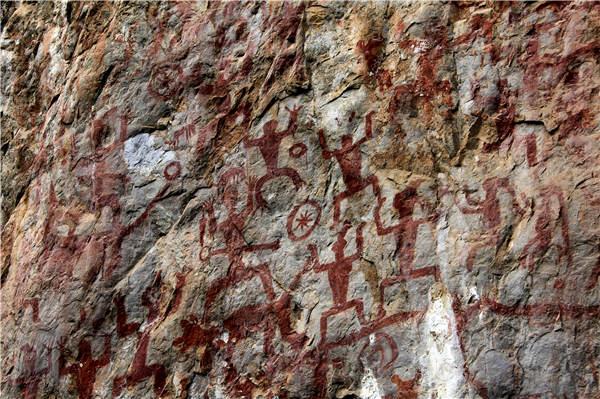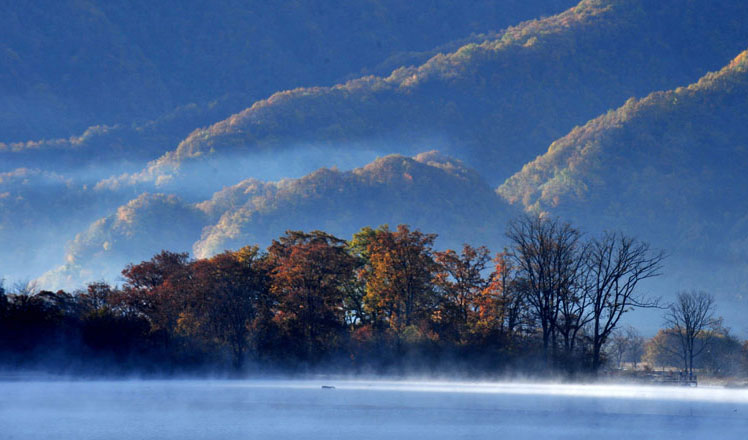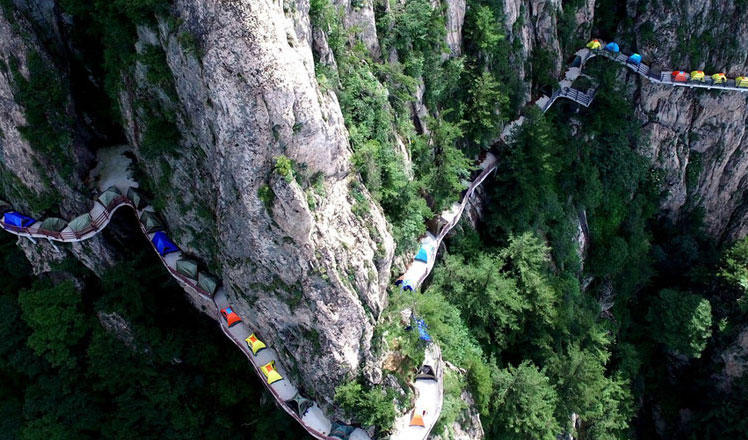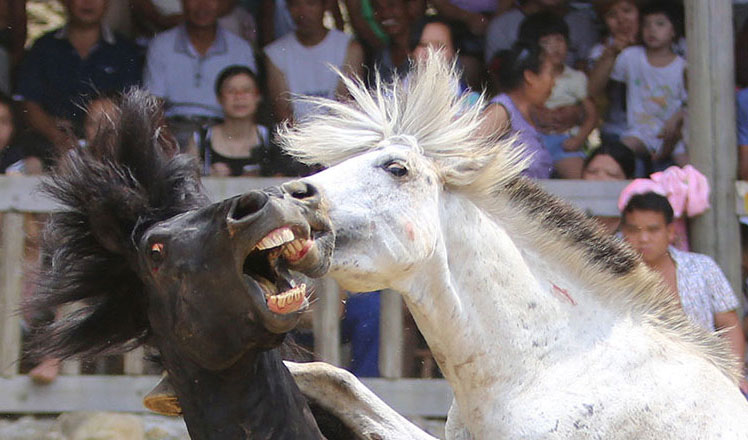Relics of many tales
Updated: 2016-07-19 07:40
By Wang Kaihao(China Daily)
|
||||||||
 |
|
Zuojiang Huashan rock painting in Guangxi, July 15, 2016. |
Getting recognized
Explaining the rationale behind seeking world heritage status for the site, Lan Riyong, the deputy director of the expert panel with the Guangxi office that sought the status, says: "When we sought UNESCO status, the rock art per se was not the only focus.
"The landscape, including the paintings, the cliffs, the river, and people's way of life on the terraces across the river, is seen as one entity: The cliffs are panels, and the river is like a string which connects these pearls. People hold their sacrifices and ceremonies on the terraces to show their reverence for the site."
A project to conserve the rocks in the Zuojiang area, which started in 2003, is ongoing.
The project is demanding when it comes to technique. The workers are not allowed to touch the paintings even when the scaffolding is being set up. Also, cage fishing, which was common in the area, is no longer allowed to avoid affecting the Zuojiang River within the heritage zone.
Gu Hang, the director of Guangxi Cultural Heritage Bureau, says despite the process to gain world heritage status for the area being fraught with difficulties, there was plenty of local support.
"When we stopped cage fishing or relocated their residences to provide a better view of the cliffs, they showed more understanding than we had expected.
"One fisherman told me, 'The rock art is what our ancestors left for us. ... We can move to somewhere else or switch to other professions'."
- African Union opens with launch of continental passport
- Baton Rouge shooter identified as ex-Marine Gavin Long
- Navy chiefs set for fresh talks on South China Sea
- Arrests hit 6,000 as Turkey cracks down on army and judges after coup bid
- A close look at Theresa May's new cabinet
- More than 70 dead in Nice attack as France marks national day

 Uphill battle for cyclists in downhill race in Zhangjiajie
Uphill battle for cyclists in downhill race in Zhangjiajie
 Shennongjia added to World Heritage List
Shennongjia added to World Heritage List
 Campers sleep perched on cliff face in Central China
Campers sleep perched on cliff face in Central China
 Two giant pandas meet public in NE China
Two giant pandas meet public in NE China
 Ongkor Festival celebrated in Southwest China's Tibet
Ongkor Festival celebrated in Southwest China's Tibet
 The world in photos: July 11 - 17
The world in photos: July 11 - 17
 Ten photos from around China: July 8-14
Ten photos from around China: July 8-14
 The only surviving panda triplets weaned from milk
The only surviving panda triplets weaned from milk
Most Viewed
Editor's Picks

|

|

|

|

|

|
Today's Top News
Ministry slams US-Korean THAAD deployment
Two police officers shot at protest in Dallas
Abe's blame game reveals his policies failing to get results
Ending wildlife trafficking must be policy priority in Asia
Effects of supply-side reform take time to be seen
Chinese State Councilor Yang Jiechi to meet Kerry
Chinese stocks surge on back of MSCI rumors
Liang avoids jail in shooting death
US Weekly

|

|







